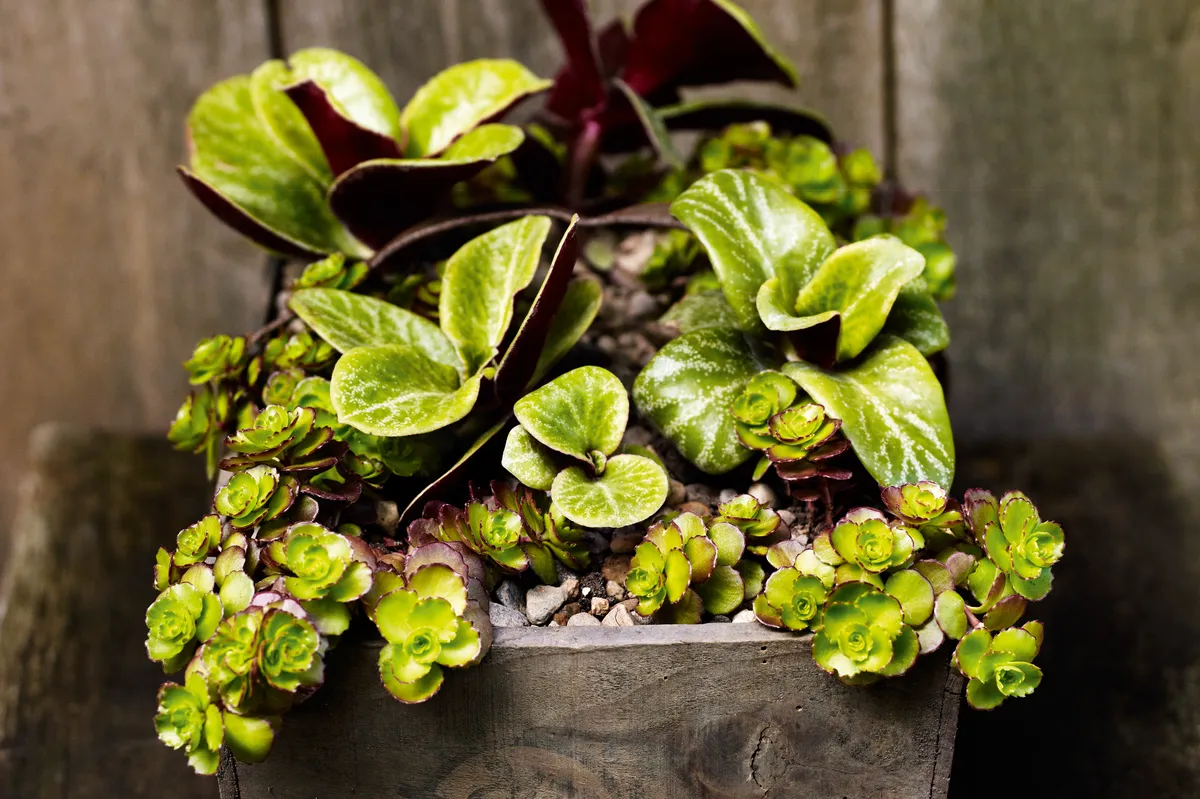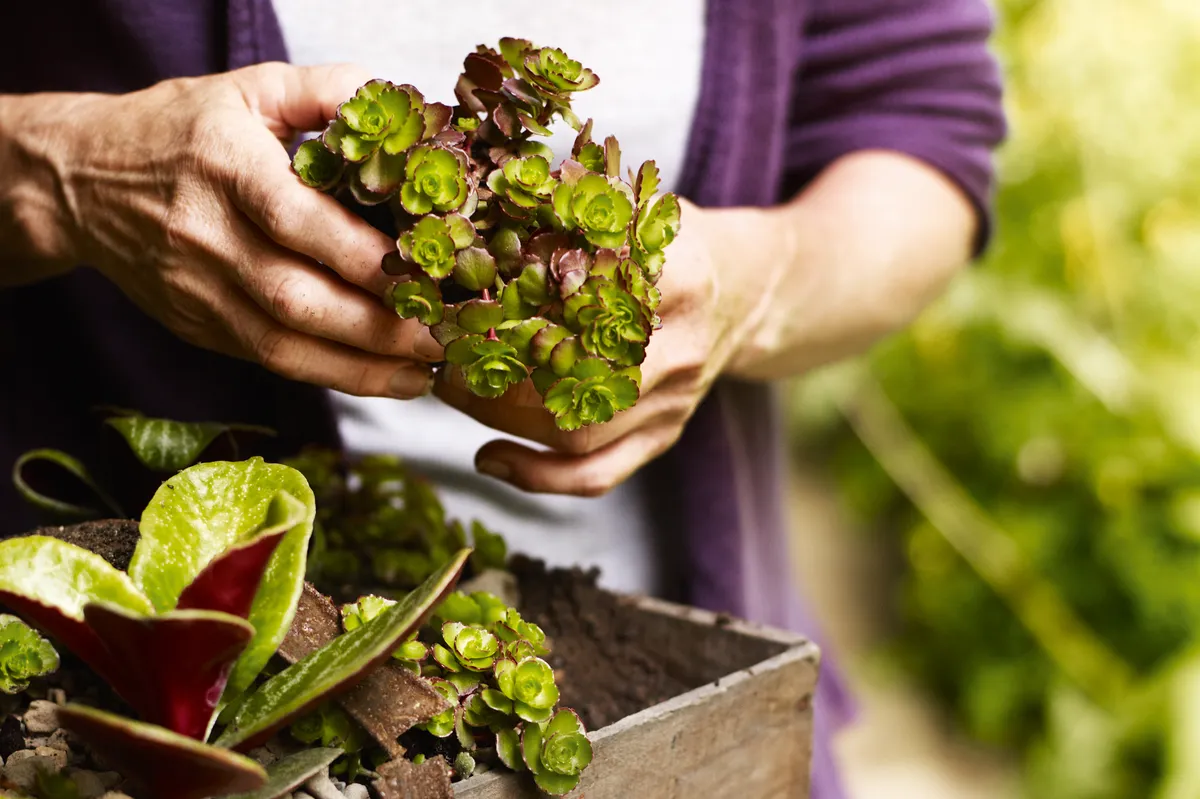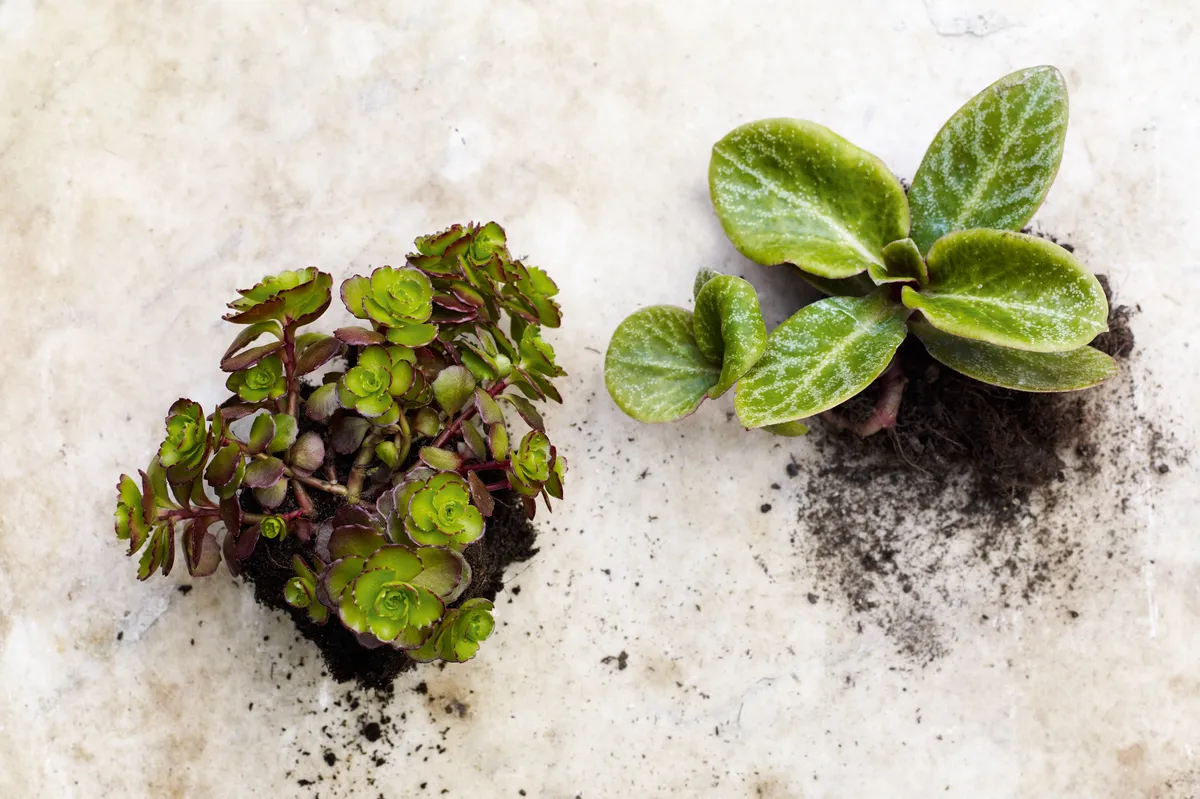I found this lovely wooden box hidden in my parents’ coal shed. Complete with rusted handle and slatted base it made an ideal container for the succulents I’d bought on impulse at a plant fair. The fleshy, two-toned leaves of the Crassula streyi had caught my eye and I thought they would combine well with sedums. After finding out they actually grow on shady, rocky ledges in South Africa, I teamed them with creeping mats of a stonecrop that can tolerate dappled shade.
How to achieve the look

Succulents look great in containers, from traditional stone troughs to contemporary living walls. This box is perfect for those requiring a well-drained soil. I lined the base with hessian to contain the compost, then added a layer of gravel followed by John Innes No.1 compost mixed with plenty of sharp grit and top-dressed with more gravel. The predominantly green rosettes of the stone crop are delicately edged in red and will eventually spill over the sides. In summer they will produce tufted red flowers to complement the wonderful carmine of the crassula leaves, whose red underside is an adaption to gather light. They can grow in full sun but the leaves will be paler and less vigorous.

The joy of experimenting with plant combinations in containers is that they can be moved to different conditions if they are not thriving. Most sedums, unlike the crassula, like full sun and will happily colonise in well-drained soil in paving, walls and gravel gardens. Sedum spurium ‘Fuldaglut’ is one that will tolerate some dappled shade, as will cultivars such as the dark-leaved ‘Voodoo’. Crassula streyi is not widely available and needs protection from frost. Alternatively, try Crassula ovata ‘Undulata’, which has wavy, fleshy green leaves, or one of the many sempervivums, which have similar colours and like a sunny, well-drained spot. All are members of Crassulaceae family.
Plants

1 Crassula streyi A tender, evergreen succulent with fleshy leaves and sprays of tiny white flowers at the end of winter. 15-35cm. USDA 10b-11.
2 Sedum spurium ‘Fuldaglut’ Deciduous and shade tolerant, this hardy succulent makes excellent ground cover and its late-summer flowers are loved by bees. 15cm. USDA 4a-9b.